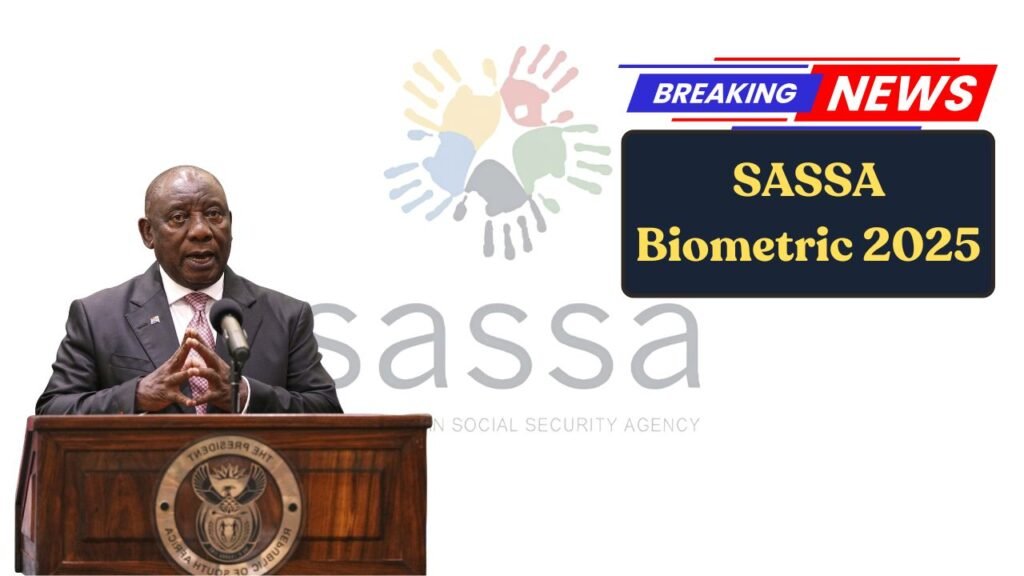The South African Social Security Agency (SASSA) is introducing a new biometric enrolment system in 2025. This change aims to make the social grant system more secure and fair. It will help make sure that grants go to the right people and reduce fraud. However, not everyone feels ready for this big change. Some groups, like the human rights organization Black Sash, are worried about how it might affect people who depend on grants the most.
Understanding SASSA’s Biometric Enrolment
The new biometric enrolment system will use things like fingerprints, face scans, or eye scans to check who you are. It sounds high-tech, right? The main goal is to stop people from getting more than one grant or pretending to be someone else.
But there is still a big question: is South Africa ready for this? In many rural or remote areas, people do not have easy access to digital tools or the internet. SASSA needs to make sure everyone, no matter where they live, can register without trouble. The system will only work well if it is easy to use and if the government helps people understand how to use it.
Black Sash’s Concerns About Readiness
Black Sash, a well-known human rights group, is not fully convinced that SASSA is ready. They are worried that some people, especially the elderly and those with disabilities, might struggle to get to the enrolment centers. Some may also have trouble providing fingerprints or face scans due to health issues.
Black Sash wants SASSA to make sure the system is accessible for everyone. They also stress the need to protect people’s data and privacy. The organization has suggested keeping other ways to verify identity during the changeover, so no one misses their grant payments. They also want SASSA to clearly explain how the new system works before it starts.
How It Affects Grant Beneficiaries
There is no doubt that this system can make things safer, but it may also be confusing at first. Many beneficiaries might not be used to such technology. To make this change easier, SASSA should run public education campaigns. Simple guides, radio messages, and community workshops could help people learn what to do.
Mobile registration units can also help. These could visit small villages or areas where travel is hard. For many South Africans, grants are the main source of income. Any delay in payment, even for a short time, can cause serious problems. That is why it is important for SASSA to plan carefully and avoid any disruptions.
Building Trust and Transparency
Trust is key for the success of this new system. People must believe that their personal data will be safe. SASSA should follow all data protection laws strictly and make sure no one’s information is shared without permission.
Regular updates can also help build trust. SASSA can use local radio, TV, and SMS messages to keep people informed. Working together with civil society groups like Black Sash will also help solve issues faster. If SASSA shows transparency and listens to public feedback, more people will support the new system. A clear plan and open communication will make the change smoother for everyone.
Summary Table
| Aspect | Details |
| Program Name | SASSA Biometric Enrolment 2025 |
| Purpose | Verify beneficiary identity and reduce social grant fraud |
| Key Features | Fingerprint, facial recognition, and iris scan |
| Concern Raised By | Black Sash Human Rights Organization |
| Main Concerns | Readiness, accessibility, data privacy |
| Beneficiary Impact | Challenges for elderly, disabled, and rural citizens |
| Government Role | Provide infrastructure, training, and clear communication |
Final Thoughts
SASSA’s biometric enrolment plan is a big step toward a safer and more reliable social grant system. But technology alone is not enough. The system must also be fair and accessible to all. With good planning, open communication, and help from groups like Black Sash, this change could improve how social grants work in South Africa. If done right, it will protect both the funds and the people who depend on them.
FAQs
What is SASSA’s biometric enrolment?
It is a new system that uses fingerprints, face, or eye scans to confirm a person’s identity.
Why is SASSA doing this?
To stop fraud and make sure grants go to the right people.
When will it start?
It is planned to begin in 2025.
Who is worried about the new system?
The human rights group Black Sash has raised some concerns.
Will everyone be able to use it easily?
SASSA plans to make it simple, but people in rural areas or with disabilities may need extra support.

